Any Shopify merchant knows firsthand the importance of maximizing sales and creating a positive customer experience .
Cross-selling is one of the most effective strategies for achieving these goals.
However, cross-selling comes with its own set of challenges.
Like many other merchants in eCommerce, have you ever experienced the frustration of a missed opportunity?
Perhaps you've sold a customer a product, only to realize later that you could have offered them something else that would have perfectly complemented their purchase.
Or maybe you've struggled to get customers to add extra items to their cart, leaving you with missed sales and a less-than-ideal customer experience.
These missed opportunities are frustrating, costly and negatively impacting your customer experience.
To boost your average order value and ultimately your revenue, you need to follow the best practices for cross selling on your Shopify store. By implementing the best practices for cross-selling that I'm about to share with you, you can turn missed opportunities into successful sales and create an exceptional customer experience in the process.
Let's dive in!
Best practices for cross-selling
Cross-selling, if done well, can increase your brand's bottom line and customer loyalty. If done wrong, it can chip away at profits, create dissatisfied customers and damage your brand's reputation.
Following the best practices for cross-selling will not only create value for your customer and make them feel understood, it will also be immensely beneficial for your Shopify store in a long run.
1. Understand your customers
To cross-sell right, it's important that you have a good understanding of your customers' needs and preferences.
You need a full analysis of customer data to identify patterns and preferences. This information is important to make informed cross-selling recommendations.
Tips:
- Use customer surveys and feedback to gain insights into their needs and preferences.
- Use segmentation to group customers based on their behavior or preferences.
2. Offer relevant products
Always enure that the products you are recommending to the customers are relevant.
If a customer is interested in purchasing a specific product, recommend complementary or related products that enhance their experience and meet their needs. AI can help you do that more effectively.
Tips:
- Use collaborative filtering to recommend products that other customers with similar profiles have purchased.
- Leverage AI personalization to recommend products that match the customer's interests and preferences.
3. Don't be pushy
While cross-selling can be an effective way to boost revenue, it's important to avoid being too pushy or aggressive.
Customers can feel forced and annoyed if they are bombarded with too many recommendations. They will feel worse if these recommendations are irrelevant to them.
Tips:
- Limit the number of cross-selling recommendations to avoid overwhelming customers.
- Avoid using aggressive or pushy language in your recommendations.
- Ensure that the recommendations you provide are relevant and useful to the customer.
4. Provide clear information
Make sure that customers have clear information about the products you are recommending, including pricing, features, and benefits.
Prominently display product descriptions and social proof like reviews or ratings to help customers make informed decisions.
Tips:
- Provide detailed product descriptions, including features, benefits, and pricing information.
- Include customer reviews and ratings to help customers make informed decisions.
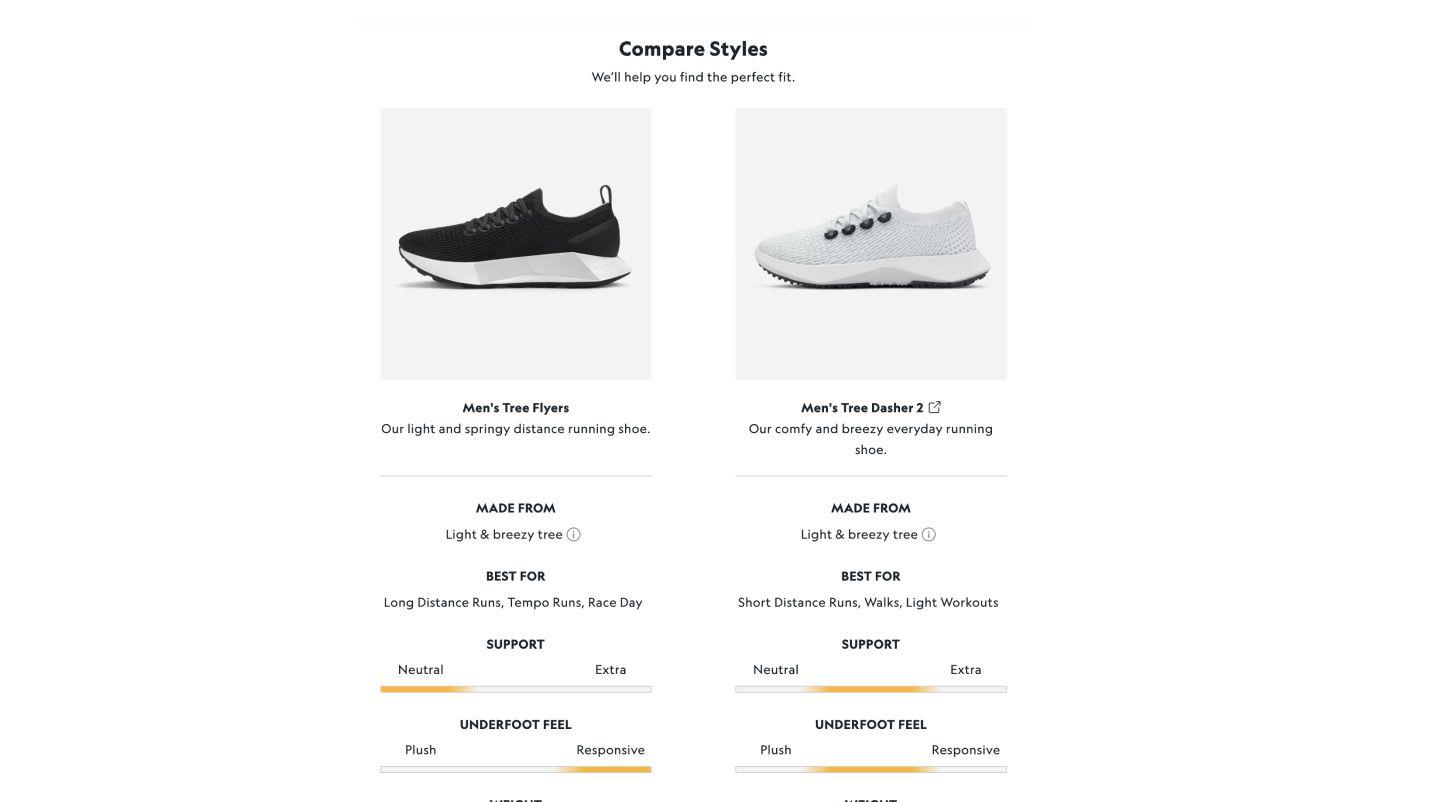
5. Make cross-selling recommendations at the right time
Timing is extremely important when it comes to cross-selling. Whether you are recommending right products at the right time or not can make or break your cross-selling strategy.
Recommending products using AI can make sure your customers get everything they love whenever they want.
Tips:
- Pop-ups can provide recommendations that are relevant to the customer's current browsing or purchasing behavior.
- Use email marketing to provide personalized product recommendations based on a customer's purchase history.
6. Use technology to automate cross-selling
Consider using technology, like machine learning or AI, to automate cross-selling recommendations. They not only help businesses provide personalized recommendations in real-time but also ensures that the recommendations are ultra relevant.
Recommending products using AI is making lives of brands easier and better as these recommendations are time saving, cost effective and 1:1 personalized.
Tips:
- Use machine learning or AI to automatically recommend products based on a customer's behavior or preferences.
- Implement a recommendation engine that can provide real-time recommendations based on a customer's actions.
To save their time and money, Shopify stores can install PersonalizerAI to effectively automate their cross selling strategy. Start using PersonalizerAI for free on your Shopify store today!
7. Monitor and optimize
Track the performance of your cross-selling recommendations to identify areas for improvement. Monitoring will help you understand which products are most likely to be purchased together and refine your cross-selling strategy accordingly.
Tips:
- Analyze customer data to understand how customers are responding to your recommendations.
- Test different recommendation strategies and optimize them based on their performance. Make adjustments as needed to improve the effectiveness of cross-selling strategies.
If you want to learn how to cross-sell effectively on your Shopify store then read: Boost Your Shopify Sales with Cross-Selling: The Ultimate Guide
Cross-Selling Examples to Inspire Your Strategy
If you’re an eCommerce owner or marketer, there are some brands that have done a great job of integrating cross-selling into their strategies that you can learn from. Cross-selling can be applied in various ways, such as having a recommendation section on your website or using email and SMS marketing. So let's dive into some companies that excel at cross-selling in eCommerce!
1. Amazon
It should not be surprising that the first on the list is amazon.com. As one of the pioneers of e-commerce, Amazon uses personalized recommendations based on a customer's browsing and purchase history to suggest related products.
Amazon earns more than 35% of their revenue from the AI generated product recommendations. Amazon uses cross selling all across the customer journey, from their website and app to emails. They leave no opportunities to sell more.
They often bundle products together and offer "Frequently bought together" suggestions on product pages.
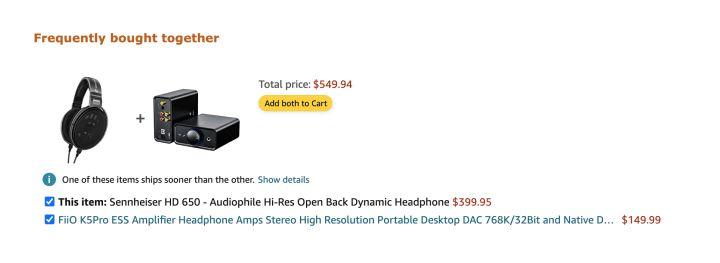
2. IKEA
Everybody knows and loves IKEA. The home furnishings retailer is no stranger to cross selling.
IKEA often showcases complementary products together, creating entire room setups to encourage customers to buy more items.
Just like Amazon, IKEA too invests in state of the art AI to deliver cross selling recommendations to their customers. They use Google’s Recommendations AI on their website to delight their customers.
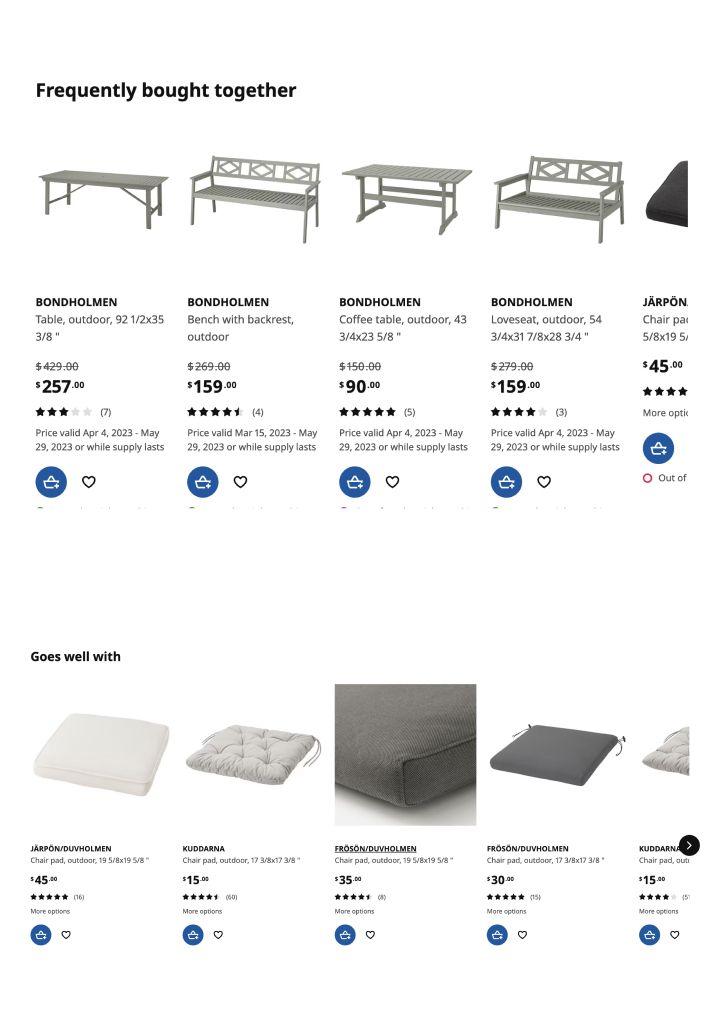
3. Target
Target convinces customers to buy additional products with effective cross selling across all channels. Target is known for its product bundles and personalized recommendations.
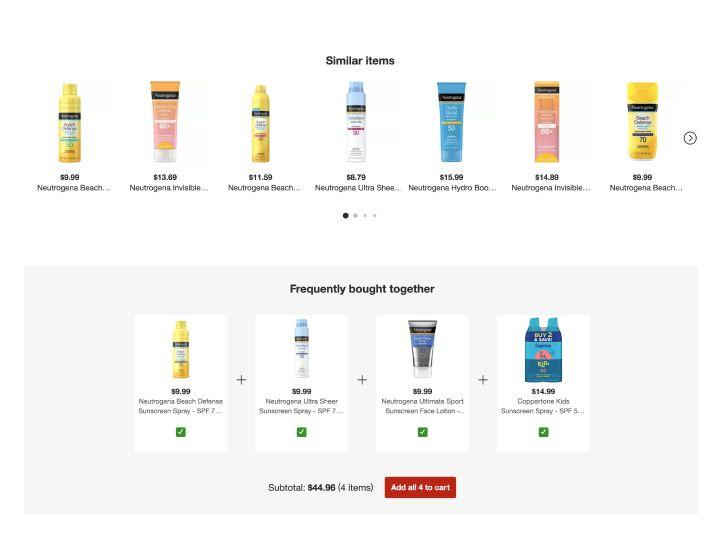
4. Apple
Apple’s cross selling strategy is simple and extremely effective. They usually recommend the matching accessories and add-ons for your original purchase.

5. Sephora
The beauty retailer is known for its successful cross-selling strategies, including product bundles and personalized recommendations based on a customer's purchase history and beauty profile. Sephora uses AI powered product recommendations in their cross selling strategy.
You can use the same AI on your online store that Sephora uses for delivering personalized recommendations by installing PersonalizerAI.
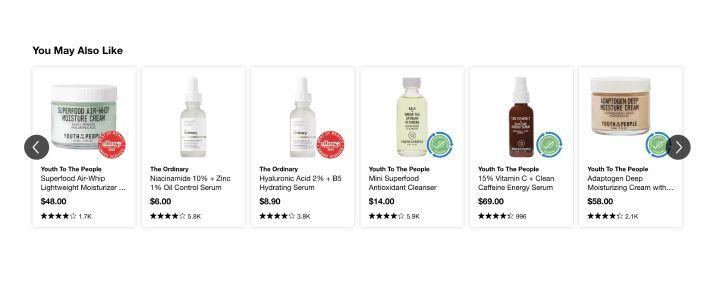
Remember, cross-selling is not about pushing products on your customers. It's really about understanding their needs and offering solutions that can enhance their overall shopping experience.
Recommended Reading: How To Cross-sell On Shopify Like A Pro
